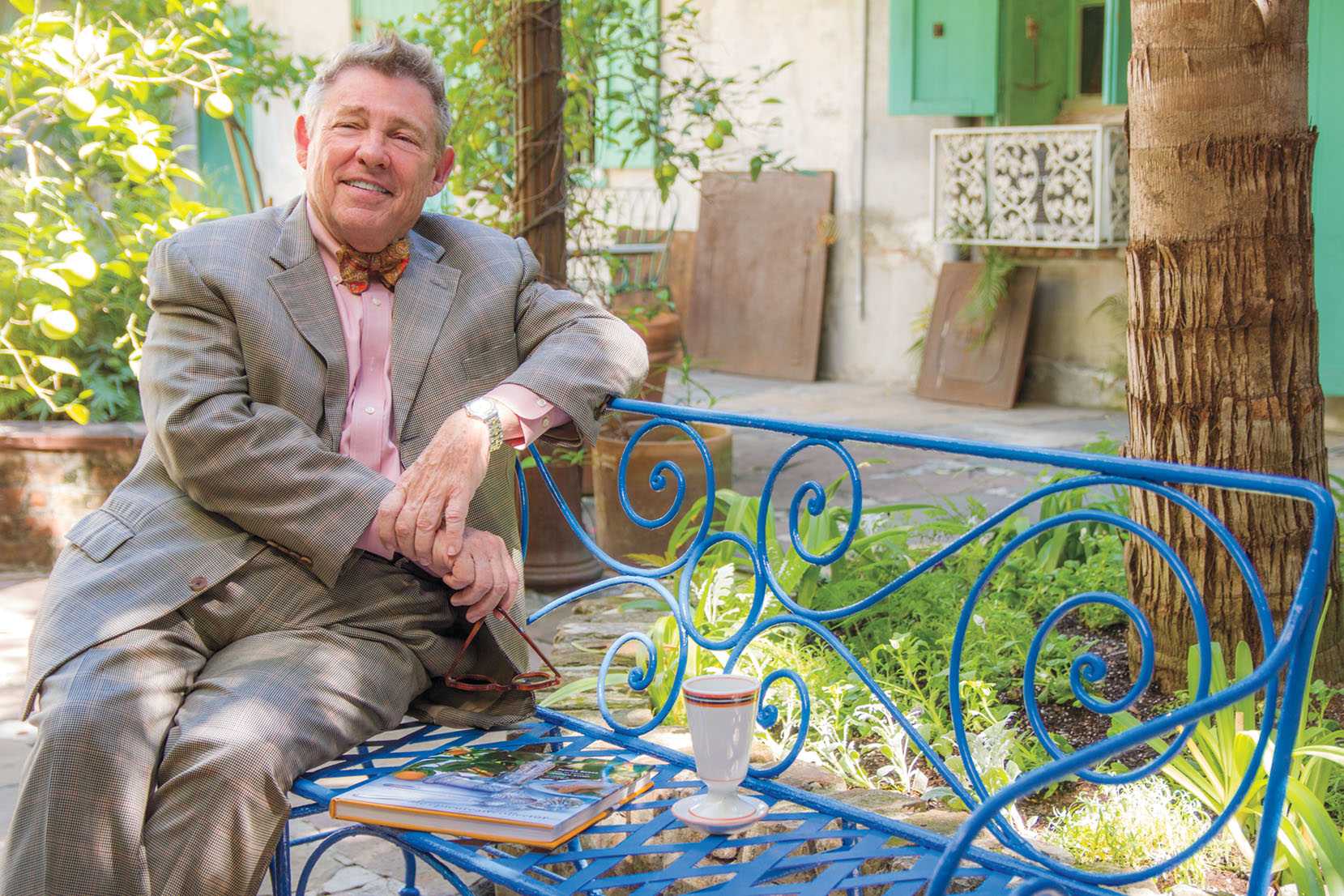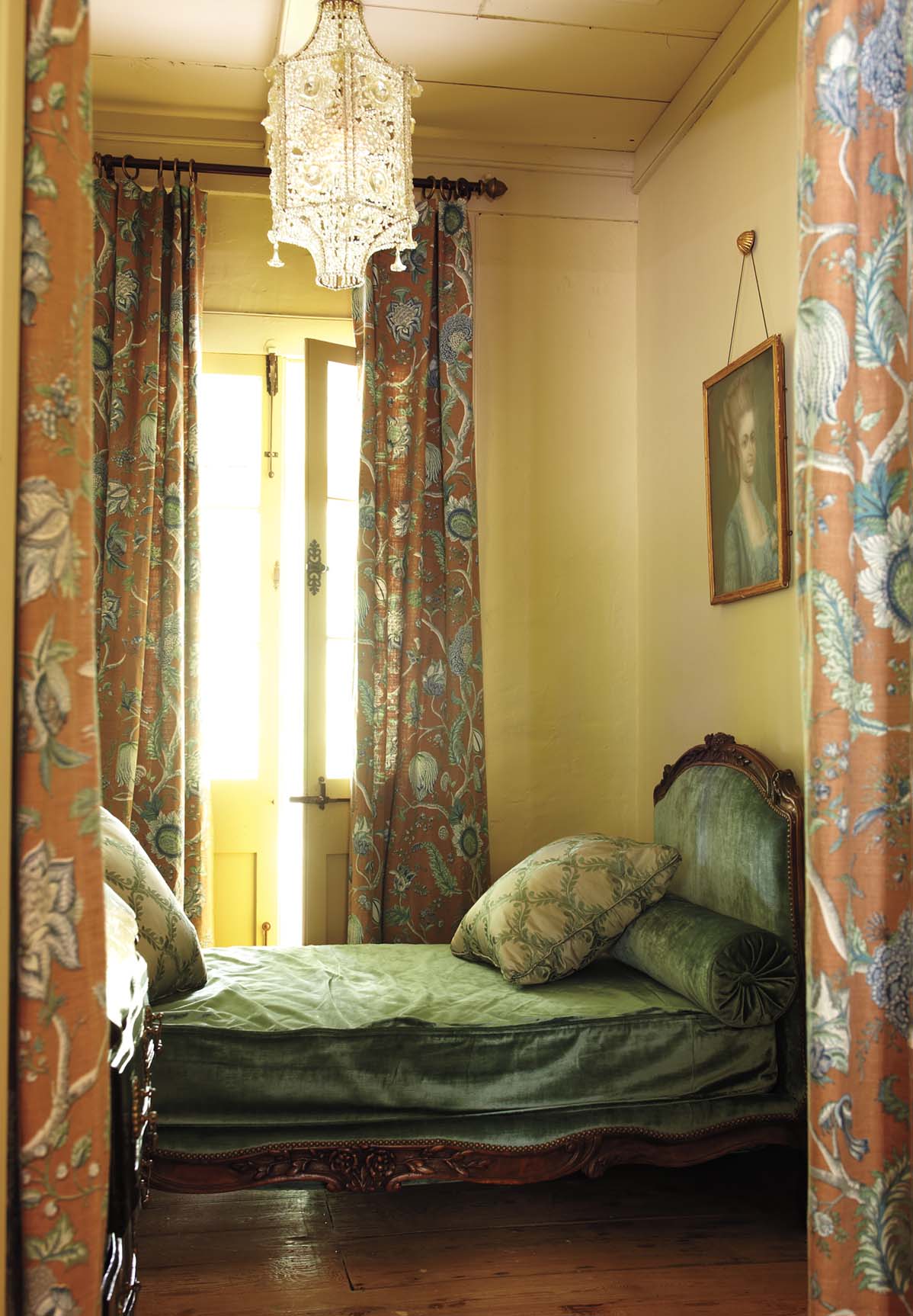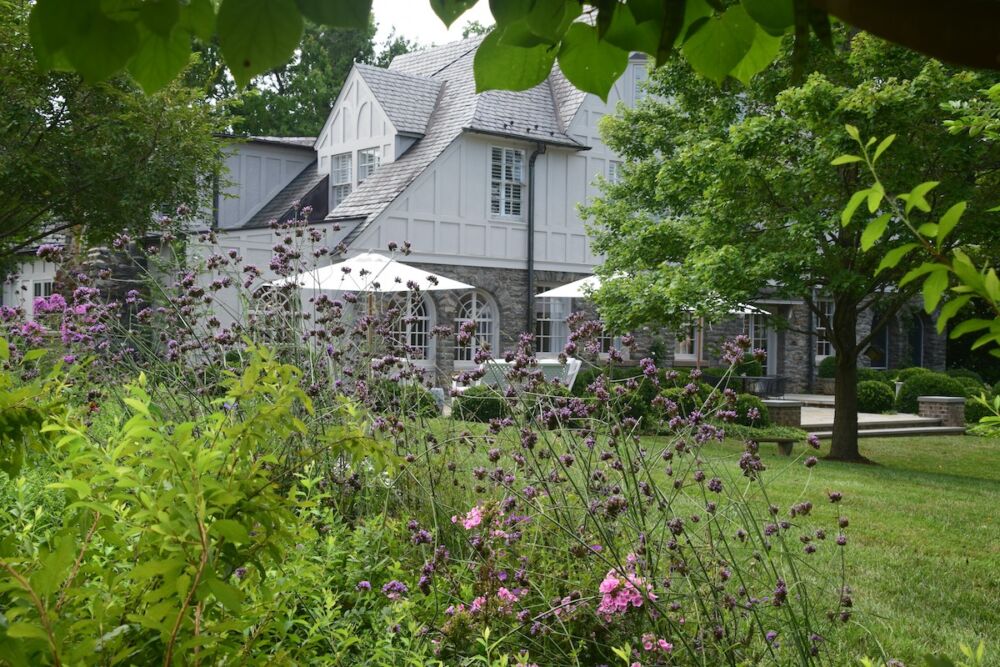
Interior decorator Patrick Dunne. Photo by Stephen Young
Q&A
FLOWER: YOU HOLD ADVANCED DEGREES IN HISTORY, OWN A FABULOUS SHOP DEDICATED TO CULINARY ANTIQUES, AND ALSO DECORATE HOUSES. THAT’S QUITE A RANGE, BUT IT’S CLEAR THE COMMON THREAD IS YOUR DEEP CONNECTION TO THE PAST. WHERE DID THAT ORIGINATE?

Patrick Dunne’s New Orleans library exhibits his penchant for living and decorating with things that have history, beauty, and soul. Photo by Simon Upton/The Interior Archive
LET’S TALK SHOP—YOUR CULINARY ANTIQUES SHOP, LUCULLUS, IS A TREASURE TROVE OF RARE AND UNUSUAL CURIOSITIES, FROM THE MOST PRIMITIVE SKIMMERS TO THE MOST ELABORATE SALTCELLARS. WHERE DID YOU GET THE IDEA TO OPEN THE STORE?
When I moved to New Orleans from Georgetown, it struck me that the city was known for two things—exquisite antiques and delicious food, which, coincidentally, were two of my father’s greatest loves. Years later, after a few bottles of wine during a long dinner with friends, I got the idea to combine the two, and Lucullus was born.

The exterior of Dunne’s brightly colored New Orleans shop, Lucullus. (Since publication, the shop has moved from its French Quartier location to the Bywater neighborhood.)
WITH SUCH RICH HISTORY AND CULTURE, NEW ORLEANS SEEMS TO BE THE PERFECT PLACE FOR YOU. TELL US ABOUT YOUR HOUSE THERE.
I live in a 19th-century Creole townhome located in Faubourg Marigny, a historic neighborhood downriver from the French Quarter. My country home, Serenity, is west of New Orleans in bayou country and was also built in the 19th century. I also have a little apartment in Lyon, France.
ARE THERE ANY GO-TO FLORAL FABRICS IN YOUR DECORATING REPERTOIRE?
No, I let a room decide what should go inside of it. For instance, in my bedroom at Serenity, I have linen curtains with big, faded cabbage roses on them. I chose them because that window looks out onto my rose garden—although my roses are not quite as big as those on the curtains. That said, right now I am very into William Morris’ historic wallcoverings and textiles, many of which are floral. And I am always drawn to chintz. I grew up around it, so it’s a very nostalgic fabric for me. I have to say, though, that most of the floral motifs in my homes can be found in my porcelain collections. My dinner service is Barbeau, which was Marie Antoinette’s pattern that became popular throughout the Francophile world in the 18th and 19th centuries. It is white with delicate blue cornflowers that dot the surface to hide the imperfections in the porcelain. I like it because it’s clean and more of a masculine, unfussy floral.


WHY DO YOU THINK THAT FLOWERS HAVE HAD SUCH A TREMENDOUS IMPACT ON EPICUREAN ARTIFACTS AND THE DECORATIVE ARTS, AND WHY DO THEY CONTINUE TO BE A SOURCE OF INSPIRATION?
It sounds like a complex question, but the answer is quite simple. The symbolism associated with flowers goes back to the ancient world, and its power remains strong today because of its profound spiritual meaning. A flower is a living thing whose beauty is fleeting, making it a reflection of our lives.
FINALLY, DO YOU HAVE ANY TIPS FOR ARRANGING FRESH BLOOMS IN ANY OF THE INTERESTING PIECES THAT CAN BE FOUND ON YOUR TABLE AND IN LUCULLUS?

GET TO KNOW PATRICK DUNNE
Favorite flower . . . Roses fresh from my garden at Serenity. If I have to buy them, though, I buy the older ones so they look as though they’ve just been picked.
Obscure culinary antique I’m dying to get my hands on . . . A knife cleaner. It doesn’t sound very glamorous, but it’s a big wheel with a crank used to polish and sharpen steel knives in the 19th century.
Most treasured family heirloom . . . A silver spoon from the 1890s that my grandmother used to feed me with as a baby. It is heavily embossed with daisies, and when I am feeling melancholy, I use it to eat my morning oatmeal and it’s an instant pick-me-up.
Destinations on my bucket list . . . Istanbul, and my house in the country—it will always and forever be on my bucket list.
Special guests at that dinner party . . .Julia Reed circa now, Marlon Brando on break from A Streetcar Named Desire, and French novelist Marcel Proust.
My closet is full of . .Moths! And bow ties and ascots. I wear neckwear for dinner no matter where I am going.
My pantry is stocked with. . . My favorite duck confit from France made by nuns near the Pyrenees. And tomato preserves made from those grown in the garden of my country house. They’re so sweet you’d think they were strawberries.
By Margaret Zainey Roux
For information about Dunne’s shop Lucullus, visit lucullusantiques.com



